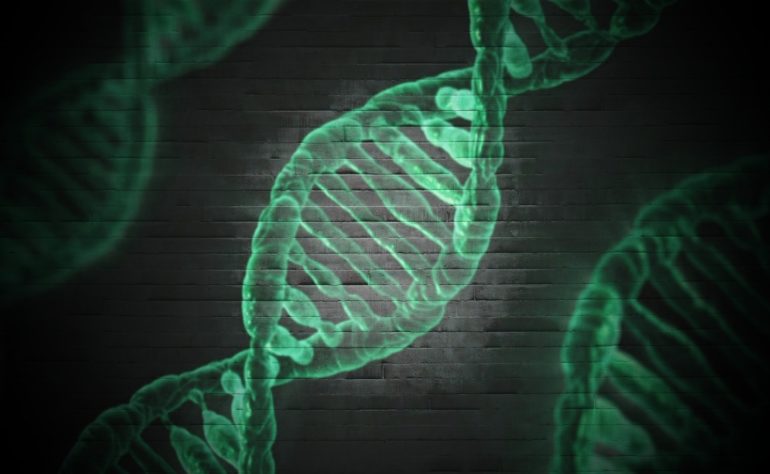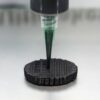A devastating genetic disease called CDKL5 deficiency disorder (CDD), which strikes in early childhood, may be significantly treatable even in adulthood, a new study from the Perelman School of Medicine at the University of Pennsylvania suggests.
CDD is caused by the mutation of a gene called CDKL5, which is thought to play an important role in steering proper brain development during childhood. In the study, published today in the Journal of Clinical Investigation, researchers found compelling evidence that the gene is important in the brain even after childhood. When they switched off the gene in healthy adult mice, the mice developed severe neurological problems like those seen in mice that lack the gene from the start of life. The scientists then tried reinstating CDKL5 gene activity in young adult mice that had been deprived of it throughout early life, and found that the animals became mostly normal.
“One of the big questions for any genetic disease concerns the curability of the disorder and the extent of the time window in which a therapeutic approach, such as gene therapy, can help patients. Encouragingly, we found evidence from these mouse experiments that CDD is likely treatable, even after childhood,” said senior author Zhaolan “Joe” Zhou, Ph.D., a professor of Genetics at Penn.
CDD is found in about 1 in every 40,000 babies born. The disorder usually manifests within weeks of birth and includes a host of intellectual and neurological disabilities including movement impairments and epileptic seizures. Patients usually use wheelchairs and require support with all activities of daily living.
Zhou and colleagues in 2012 generated “Cdkl5 knockout” mice in which Cdkl5 has a function-destroying mutation like that observed in a CDD patient. The researchers found that the knockout mice display many of the same problems seen in human CDD. Given that CDD is characterized by early and profound neurological disabilities, the extent to which CDD would be treatable and, if so, the time window of treatment remains unknown.
In the new study, Barbara Terzic, a neuroscience graduate student, and other members of the Zhou laboratory investigated CDKL5’s role in mice after brain development. They discovered, first, that the gene is active in the mouse brain not just in early life but throughout life. They then found that in normal, healthy, six-week-old mice—at the start of mouse young adulthood—switching off the gene triggers the emergence of essentially the same CDD-like disorder seen in ordinary CDKL5 knockout mice, with corresponding brain changes.
“This suggests that CDKL5 has an indispensable role in the adult brain,” Zhou said.
In other words, people with CDD may suffer not only from developmental impairments due to their CDKL5 deficit during childhood but also from an ongoing CDKL5 deficit in adulthood—a deficit that might be remedied in adults by a therapeutic approach. Indeed, the researchers found that when they silenced the gene in mice, from conception, so that the animals developed the usual CDD-like impairments, then switched the gene back on at six weeks of age, the CDD-like impairments mostly went away. In collaboration with Marc Fuccillo, MD, Ph.D., an assistant professor of Neuroscience at Penn, and his student Felicia Davatolhagh, they also uncovered the physiological basis for phenotypic reversal in mice. These findings suggest CDD is not only treatable but also amenable to treatment even after the childhood.
Researchers are still at least years from developing a gene-replacement or gene-reactivation therapy for CDD, an endeavor that would bring many technical challenges, including the formidable hurdles involved in delivering treatments to the central nervous system. But the experiments by Zhou and colleagues are a promising “proof of principle” that restoring a normal level of CDKL5 activity in adulthood can reduce disease signs.
Zhou and colleagues conducted their experiments in male mice, which allowed a more straightforward analysis, but are now following up with similar experiments in female mice. Although nine out of 10 CDD cases occur in females, these female cases are complicated by the fact that, in female cells, one copy of the X chromosome is inactivated randomly—a “mosaicism” that leads to a less than complete, and inherently hard to analyze, loss of CDKL5 activity.
“We’re also planning to look at the effects of CDKL5 reactivation further into adulthood in mice,” Zhou said.
New report shows rare disease more common than previously thought
More information:
Barbara Terzic et al, Temporal manipulation of Cdkl5 reveals essential postdevelopmental functions and reversible CDKL5 deficiency disorder–related deficits, Journal of Clinical Investigation (2021). DOI: 10.1172/JCI143655
Provided by
Perelman School of Medicine at the University of Pennsylvania
Citation:
Study suggests genetic disease CDKL5 deficiency disorder could be treatable after childhood (2021, October 15)
retrieved 16 October 2021
from https://medicalxpress.com/news/2021-10-genetic-disease-cdkl5-deficiency-disorder.html
This document is subject to copyright. Apart from any fair dealing for the purpose of private study or research, no
part may be reproduced without the written permission. The content is provided for information purposes only.



